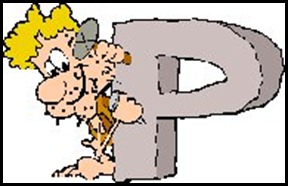The Paleo Diet
The basic idea
The Paleo diet is based on the idea that it is, in many ways, healthy to live like our ancestors millions of years ago. The DNA that defines how our bodies function evolves very slowly over a very long time. For instance, humans have really only been eating grains for the past 10,000 or so years, which is too short of a time for our DNA to have evolved to digest those foods properly (likewise, humans have only been eating refined sugars and carbohydrates for an incredibly short time). The fact, then, that modern diets are often very high in grains and refined carbohydrates leads to a variety of health problems (e.g., there have been links to diabetes, allergies, digestion disorders, and Alzheimer’s).
Although it’s often referred to as a diet, Paleo is really more of a lifestyle than a crash course for losing weight (even though weight loss often occurs when eating a Paleo diet). Therefore, it’s not just nutrition that is emphasized, but also exercise and reductions in daily stress. In general, the idea is that our food intake and weekly exercise regimes should more closely mimic that of our prehistoric ancestors. Below is a quick guide to what to eat and what to avoid as well as a description of the types of exercises done on Paleo.
What to eat and what not to eat
Ask yourself what a caveman would have eaten and you’re pretty much there! Click here for some sample meal plans.
- Vegetables are good and should be the bulk of what you eat every day.
- Meat should be consumed plentifully, although pasture-raised or grass-fed meats are encouraged.
- Good fats are highly emphasized in the diet. Good fats include animal fats (including both lard and butter), coconut oil, olive oil, macadamia oil, and avocado oil. These oils are lower in certain fatty acids that most modern diets over-emphasize.
- Some starchy/sugary foods are permitted, although in moderation. For instance, sweet potatoes and yams are both OK to eat, but they should be eaten sparsely.
- Nuts and fruits are allowed, but again only in moderation. Cavemen obviously didn’t have orchards, but they might very occasionally come across some berries and nuts.
- No grains (including oatmeal, rice, whole grains, rye, corn, cous cous, and especially wheat).
- No legumes (including kidney beans, soy beans, black eyed peas, and pinto beans).
- No processed sugars (i.e. – no added sugar in any products you buy or cook).
- Generally, no dairy products (other than butter and heavy cream).
Exercise Regime
There is great emphasis on exercise as cavemen did not sit around all day long. Neither did they jog ten miles a day on hard concrete, though. In addition to actual exercise regimes, Paleo lifestyles tend to encourage just moving around as much as possible (e.g. – walking or biking places and generally not sitting as much as possible).
Cavemen also had to engage in really intense exercise every couple days, since they had to run from predators and/or chase down and kill animals to eat. Recently, an exercise regime referred to as “Crossfit” has gained a lot of popularity among those living a Paleo lifestyle. Many crossfit gyms have sprung up in recent years to offer these regimes. The regimes often include sprinting and weight lifting in short sessions lasting maybe just 20 minutes twice a week! The workout sessions are very short but also very intense. Click here for a video of crossfit exercises.
